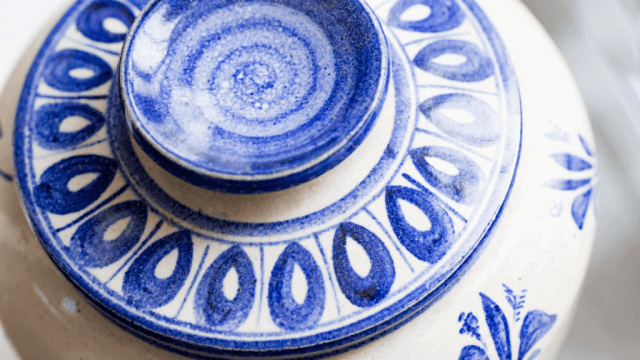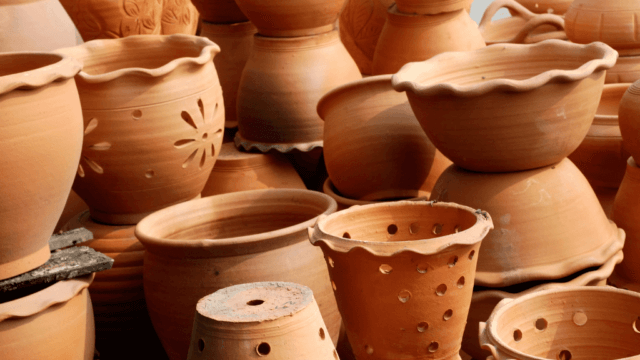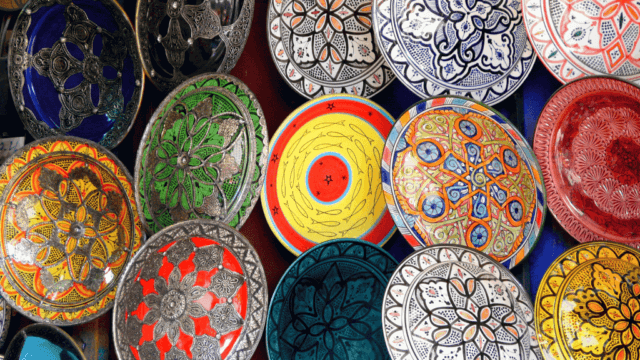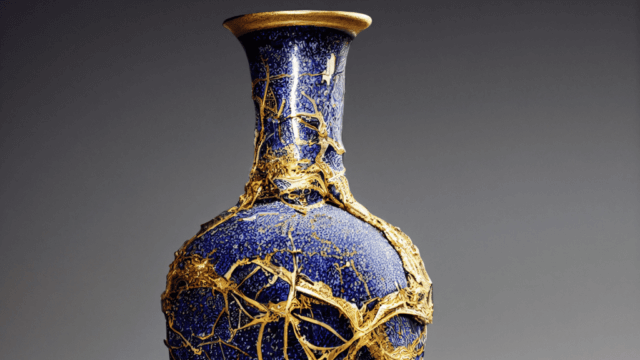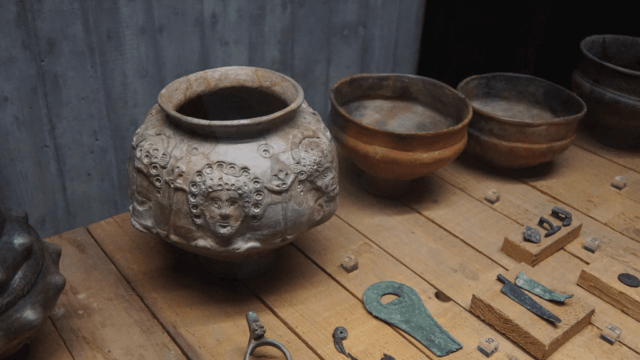Majolica pottery is a type of ceramic characterized by its opaque, colorful glazes and intricate designs, originating in Italy in the 15th century.
It is made by applying tin-glaze to earthenware, and then painting various decorations, often taking inspiration from nature.
The earthenware is fired, creating the lustrous, enameled look distinctive of Majolica pottery.
An Introduction to Majolica Pottery
Majolica pottery, originating from Italy in the 15th century, is known for its colorful, intricate designs and glossy surface.
It involves a distinct crafting process where a tin-glaze is applied to earthenware, followed by detailed decoration inspired by nature.
This article will explore this unique pottery’s history, production process, and critical characteristics.
History of Majolica Pottery
The Origins
The technique of Majolica pottery traces its roots to the Islamic world, from where it reached Italy, Spain, and Portugal.
In the 16th century, the potters of the Italian town of Faenza took it a step further, developing a style known as “maiolica” or “majolica.”
Popular Periods and Places
Throughout the Renaissance, majolica pottery boomed, with hubs in cities like Florence, Deruta, and Urbino.
The 19th century saw a revival of majolica in England, resulting in collectable pieces known as ‘Victorian majolica.’ The distinctive style continues to be produced and enjoyed worldwide today.
The Production Process of Majolica Pottery
Formation and Bisque Firing
Majolica pottery begins with shaping the clay into the desired form using various techniques like wheel-throwing or hand-building.
After air drying, it undergoes bisque firing at 1000-1100°C (1832-2012°F), turning it into a porous, hard material.
Applying Tin-Glaze and Decorating
A white tin-glaze is applied to the bisque-fired piece, providing an opaque base for decoration.
Artists then paint the earthenware with mineral-based pigments, using patterns inspired by nature, mythology, or anything they desire.
Final Firing
The decorated piece is given a final firing at a slightly lower temperature, usually around 900-1000°C (1652-1832°F).
This process solidifies the glaze, set the colors, and creates the vibrant, lustrous finish unique to majolica pottery.
Characteristics of Majolica Pottery
Distinctive Aesthetics
Majolica is famous for its rich, bold colors and intricate patterns.
Common motifs include animals, botanic designs, mythological scenes, and geometric shapes.
Lustrous Glaze
The tin-glaze used for majolica creates a smooth, glossy surface that makes the finished piece visually appealing and more resistant to wear and tear.
Various Forms
Majolica pottery can be found in various forms, such as decorative plates, vases, tiles, and figurines, making it a versatile art form appreciated by collectors and pottery enthusiasts alike.
Caring for Majolica Pottery
Proper care and maintenance of majolica pottery are essential to preserving its beauty and value.
Here are some tips to help you handle and care for your majolica pieces:
Handling and Display
When handling majolica, ensure your hands are clean, dry, and free of lotion or oils.
Hold the piece securely, avoiding decorative elements that can break off.
When displaying your majolica, place it away from direct sunlight and high-traffic areas to prevent damage, fading, or accidents.
Cleaning
Use a soft, lint-free cloth or a dry soft-bristle brush to remove dust from your majolica pottery.
Avoid using water or cleaning solutions, as they may penetrate the porous surface and damage the glaze.
In case water is necessary, use sparingly and allow the piece to air dry.
Collecting and Appraising Majolica Pottery
As a highly collectible form of pottery, identifying and appraising majolica pieces can be both an exciting and challenging pursuit.
Here are some aspects to consider when collecting and determining the value of majolica pottery:
Age
Older majolica pieces tend to hold more value, but identifying the age may be difficult.
Knowing the history of the piece or the period during which it was produced can help determine its authenticity.
Maker’s Mark
Highly regarded manufacturers or artisans may have their maker’s mark or signature on the piece.
Look for these marks or signatures as an indication of individual or regional provenance, which could increase the value.
Quality and Condition
When collecting majolica, examine the quality of the glaze, the intricacy of decorations, and the overall condition of the piece.
Damages or repairs can impact the value of the pottery, so inspect each piece carefully.
Rarity
Rarity is another important factor in determining the worth of a majolica piece, as certain patterns or designs might be harder to find or exclusively produced by a specific artist or workshop.
Researching different styles and makers will help you better understand the rarity and demand for specific majolica pieces.
FAQs on Majolica Pottery
Browse through our frequently asked questions about Majolica pottery to learn more about its origins, characteristics, and care.
We have compiled essential information in a concise format to address common inquiries posed by collectors, enthusiasts, and those new to the world of majolica pottery.
What is the difference between Majolica and Faience pottery?
Majolica and faience both refer to tin-glazed earthenware, but they differ in regional and historical context.
Majolica is often linked to the Italian Renaissance tradition, while faience is commonly associated with earthenware produced in France, the Netherlands, and other parts of Europe.
Despite their different origins, both forms share similarities in their production processes and aesthetics.
What are the key factors affecting the value of Majolica pottery?
The value of Majolica pottery is determined by a combination of factors such as age, maker’s mark, quality, and rarity.
Older, well-preserved pieces are usually worth more, and pottery from renowned artists or workshops often carries a higher value.
The intricacy, uniqueness, and design demand also play a significant role in evaluating a piece’s worth.
Is Majolica pottery food safe?
Modern majolica pieces that adhere to contemporary production standards can be food safe, but older or antique majolica may not be suitable for food use due to lead in their glazes.
If you are unsure, it’s best to use majolica for decorative purposes only and avoid direct food contact.
How can I identify authentic antique Majolica pottery?
Identifying authentic antique majolica pieces may be challenging but can be done by examining the age, maker’s mark, quality, and rarity of the pottery.
Look for distinctive characteristics such as specific signatures, designs, or color combinations that are indicative of a certain period or workshop.
Investing time in learning about majolica history and styles can also help in distinguishing authentic pieces from reproductions.
Can majolica pottery be repaired if damaged?
Yes, majolica pottery can be repaired when damaged, but it’s essential to use specialized techniques and materials to restore it properly.
Contact a professional ceramics conservator for advice on the best course of action and avoid DIY repairs, as improper methods can further damage the piece or decrease its value.

